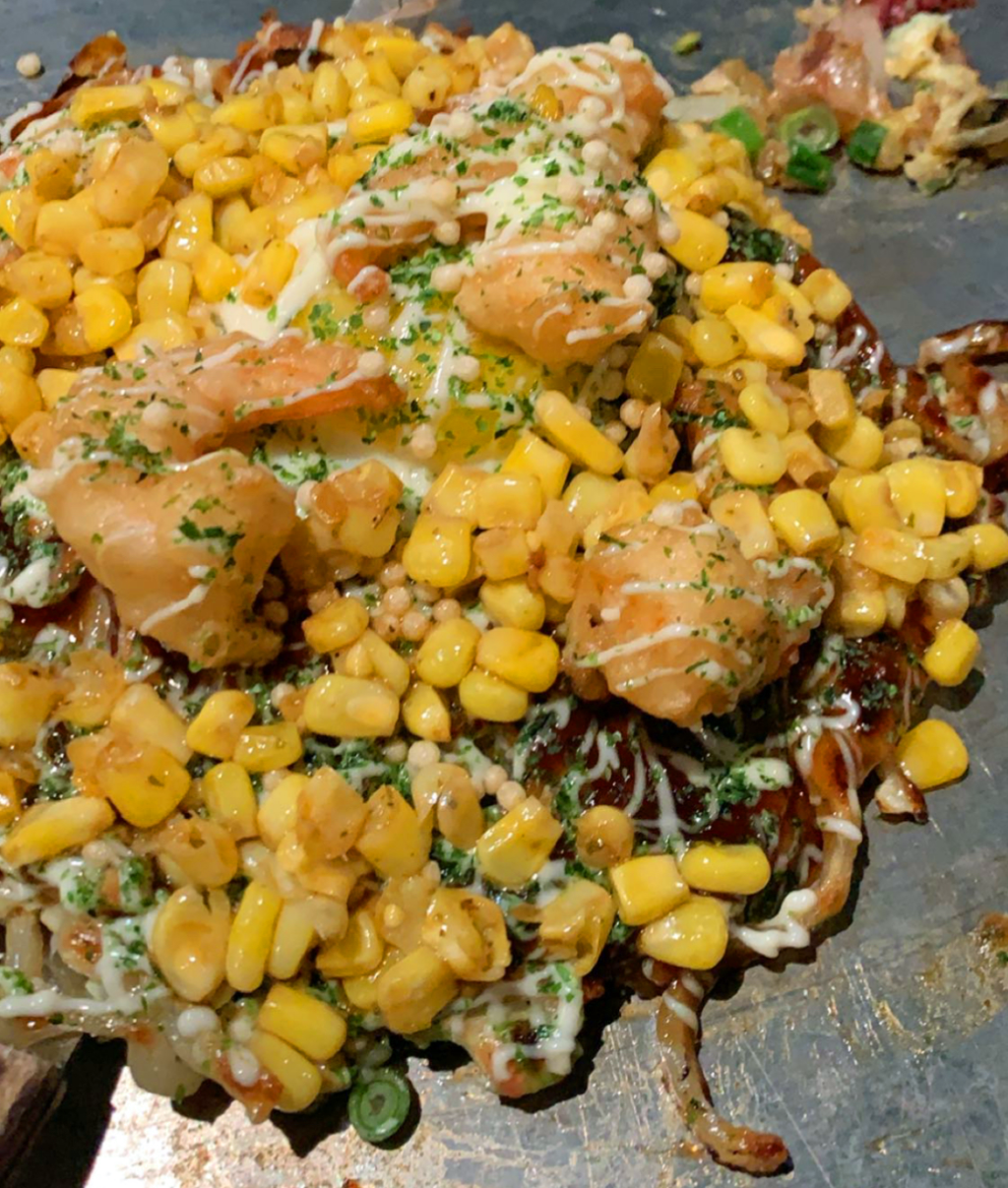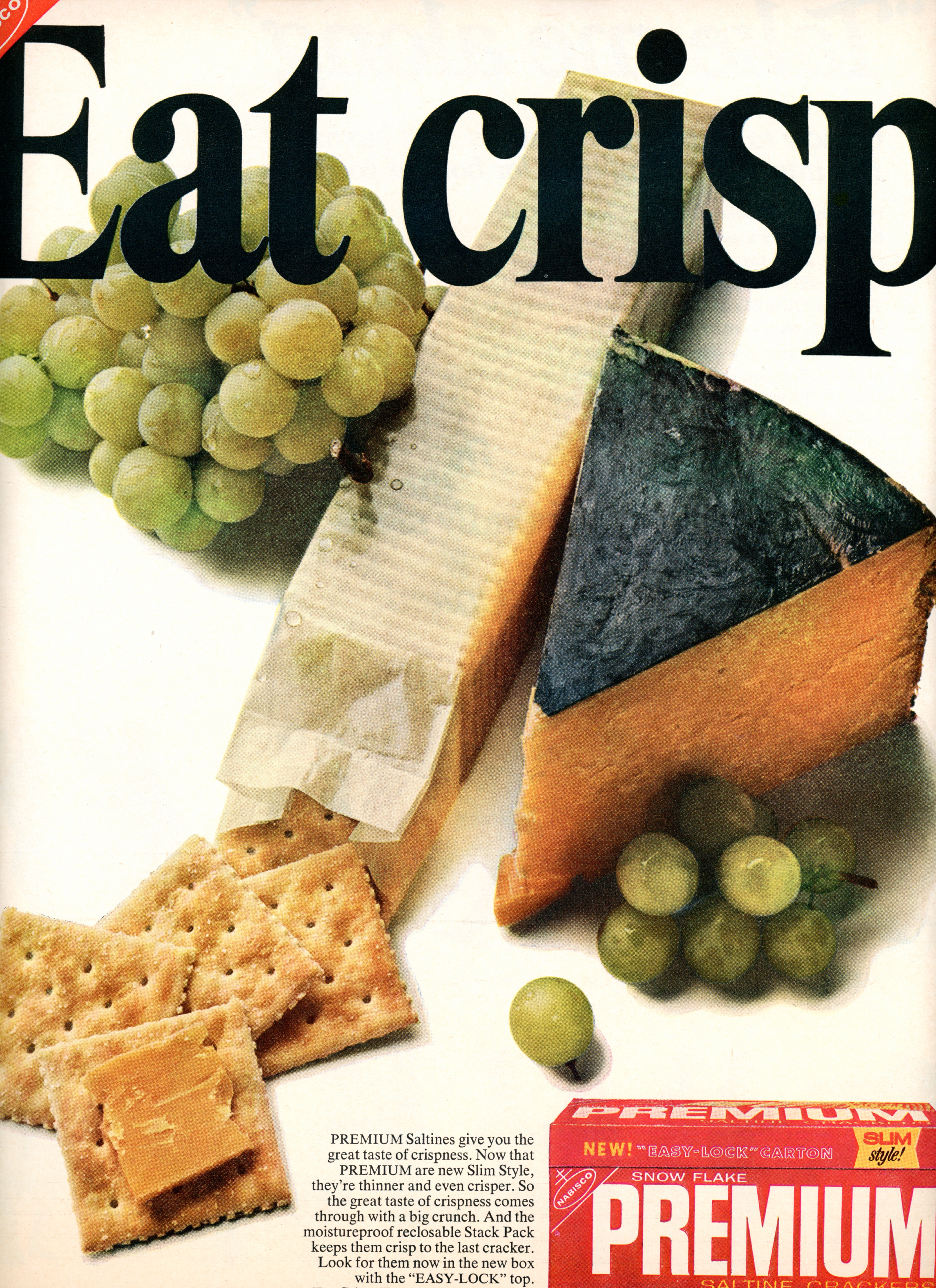Gaijin has garnered praise as one of Chicago’s most ambitious openingsof 2019, and, while the last year saw little by way of new concepts in thiscity, the restaurant’s reputation is well-earned. You have visited theestablishment four or five times following its first day of service in earlyNovember and must attest that the space is inviting, the food is delicious, andthe experience flows with nary a hiccup. Yet Gaijin is still undoubtedly a “fastcasual” restaurant—that familiar term whose definition has been so twisted, sodistorted that it now demarcates any eatery that lands somewhere between finedining and fast food. Can all the formulation involved in maintaining fastcasual profit margins really coexist with creating inventive food? Can a chefempower his or her staff to express themselves (and, thus, impart in therestaurant something approaching a “soul”) when customer interaction is minimaland the kitchen never ceases? Or, is Gaijin’s gamble on savory Japanesepancakes just the latest flash in the pan, a restaurant destined fordestitution once “foodies” find another shiny object to salivate over?
The chef of which we speak, in this case, is Paul Virant, who, despitethe French-sounding name, grew up on his family’s farm outside of St. Louis. Afterearning a degree in nutrition from Wesleyan College and graduating from theC.I.A. in New York, Virant cut his chops at Charlie Trotter’s, Ambria, Everest,and Blackbird before founding Vie, his flagship restaurant, in 2004. Despitebeing located well out of the city (in the west suburban village of WesternSprings), Vie earned a Michelin star in the Guide’s inaugural (2011) Chicago editionand retained it the year after. 2011 also saw the opening of Perennial Virant,a restaurant in Lincoln Park’s Lincoln Hotel that was created in collaborationwith Boka Restaurant Group. Despite positive reviews, Perennial would close atthe end of 2016 as BRG sought to reconceptualize the space. That took Virantout of the city to focus on Vie—still running strong—and Vistro, a westsuburban bistro he opened in 2014. That is, until the chef made his triumphantreturn to downtown with the out-of-left-field concept that is Gaijin.
Before examining the restaurant proper, it bears exploring Virant’sculinary style a bit more carefully. While, at first glance, the restaurantsscream “French” or “country French” cooking, they do not seek to merelyregurgitate onion soup, cassoulet, and beef bourguignon. Rather, Virant’spersonal style is best described as a meeting of Midwestern ingredients and farmphilosophy with French technique. You see, the chef has a particular passionfor pickling and canning products—as seen through his 2012 cookbook ThePreservation—that undeniably stems from his time in St. Louis. Being onthe family farm, no doubt, meant learning to make the most of the season whetherenjoying nature’s bounty fresh or preserving it for use during the winter.Thus, Virant begins with the season, the moment, taking a locally and lovinglyproduced ingredient and imagining not just what flavor it may yield now, butmonths or years in the future.

In this manner, Midwestern produce—at its very purest—breathes newlife into French favorites. Wood-grilled foie gras at Vie, for example, isgarnished with sunchokes, apple, and smoked apple butter. Similarly, an entréeof sturgeon is sauced with pickled tomato and pancetta vinaigrette. Even thesteak frites at Vistro is given a twist with the addition of pickled mushroom.Clearly, Virant knows how to imbue his dishes with depth of flavor, and hedeserves extra credit for using a tag team of fresh and preserved local produceto stamp fish, fowl, pig, and cow with the unmistakable mark of the Midwest.And the chef makes great charcuterie too! Not just that, but homemadeCheez-Its? Fried beet pickles? Chicken mojo, baba ghanoush, and pizza too? Vistro’sdry-aged griddled burger even ranked #2 on the Tribune’s “20 BestBurgers in the Chicago Suburbs.” You see, Virant’s wheelhouse extends farbeyond French fare. He extends his preservative style to the full range ofChicago’s (or, perhaps, America’s?) food culture, much in the same wayBlackbird draws on any number of eclectic influences while never deviating inits ingredient sourcing. This is Midwestern cuisine in its essence, andperhaps that breadth is what enabled Virant to depart so drastically from whathe was known for at Perennial.
Gaijin’s location, now that you mention it, is a departure fromPerennial’s as well. Virant smartly traded Lincoln Park—one of the city’s mostgenteel and altogether unappealing neighborhoods for dynamic cooking—for FultonMarket, Chicago’s most exciting dining district for the past decade running. Inmaking this switch, the chef now caters less to stuffed shirts and more to “techbros” and other yuppies drawn to novelty for novelty’s sake. The restaurantsits one block south of The Aviary, Swift & Sons, (and Google’s Chicagoheadquarters) and just a couple blocks from the new McDonald’s corporateheadquarters. Gaijin is west of Au Cheval, Girl & the Goat, and Momotarobut still quite a ways east of Smyth and Elske. That means the location is almostsmack dab in the middle of Fulton Market and could very well benefit from theinevitable westward expansion of office and apartment buildings throughout theneighborhood.
Gaijin’s edifice is somewhat obstructed by the Morgan Station transitstop (which, in truth, may ultimately prove another boon for Virant), and thebuilding’s windows are also set ever-so-slightly within the its outmost wall,meaning the restaurant is easily missed. That being said, it’s a cutebuilding—dwarfed by those surrounding it—that makes for an intimate, cozyspace. It’s not cramped either, just wonderfully self-contained and curated.The outer brick boasts a giant, graffitied samurai warrior who wraps around therestaurant’s flank and extends above the windows. The inside is all lacqueredwood and neon with various Japanese knick-knacks scattered about and tapestrieshung on the original brick. There is quite a mix of textures and patterns atplay, but it all works. It all comes together to look slick and genuine in itsappreciation of the culture from which the restaurant’s cuisine is derived.
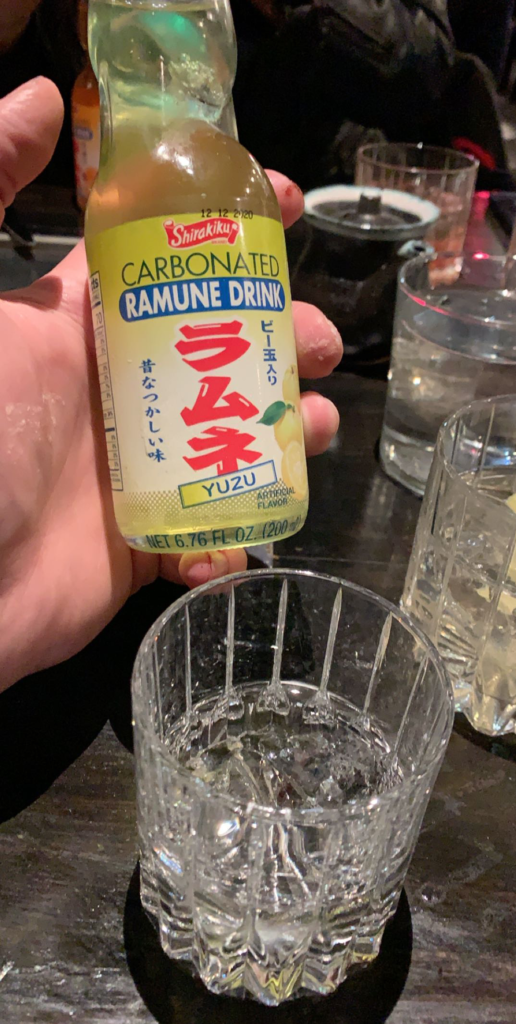
You first visited Gaijin a little more than two weeks after itsopening and, since then, have visited three more times during the course of amonth. The experiences, short of a few tweaks to the menu that you havenoticed, have been consistent, and so you will condense the four visits intoone comprehensive narrative that seeks to explore the totality of therestaurant’s offerings. So, let’s begin:
It is a Saturday in late November—just a couple weeks after Gaijin’sopening—and a little before 9 PM. You have just dined at Alinea, and your partysits inside the Uber that the restaurant has called for you. 950 W. Lake St. isthe given destination, but the driver—no doubt distracted by the elevated line’sencased entrance—turns the corner onto Morgan St. and stops somewhere betweenBar Takito and The Aviary. Scurrying out of the vehicle—and feeling far fromsober—you walk back towards Lake St. in search of Gaijin. Peering east, you spyno sign of the restaurant, and so the group decides to cross southward. Aftermaking your way east down that side of the street, the building finallyappears—back on the other side. You retrace your steps feeling a bitfoolish but, mind you, this is before the restaurant put up the glowing signagethat allows patrons to distinguish the establishment’s slim façade from furtherdown the block. Also, for what it’s worth, Google Maps places its pin on thebuilding directly behind Gaijin, making it seems as though the entrance is inan unused back alley. But who doesn’t enjoy a bit of a workout before seconddinner?
You enter the restaurant and find yourself in a small receiving area.There is counter seating for six up against the window and another, longercounter that stretches along the side of the building opposite the door andcomprises eight seats at the bar plus another thirteen in front of the kitchen.Facing forward from the door, peering over a small counter, you see the diningroom: a mix of tables for two and four with a couple banquettes that fit six.Each of these tables have inset electric grills proportioned to their size, andeach of the chairs at the tables and kitchen counter have storage cubbieshidden under their cushions. In all, Gaijin seats somewhere around 60 customersand makes use of its space marvelously. The main “lane” stretching from thefront door, along the kitchen, to the bathrooms is narrow (but not too narrow).So are the gaps between stools, seats, and tables (without ever making one feelsquished against the other guests). The restaurant has undoubtedly maximizedits building’s space without compromising the customer experience orhandicapping the front-of-house staff—a true accomplishment for any fast casualconcept.
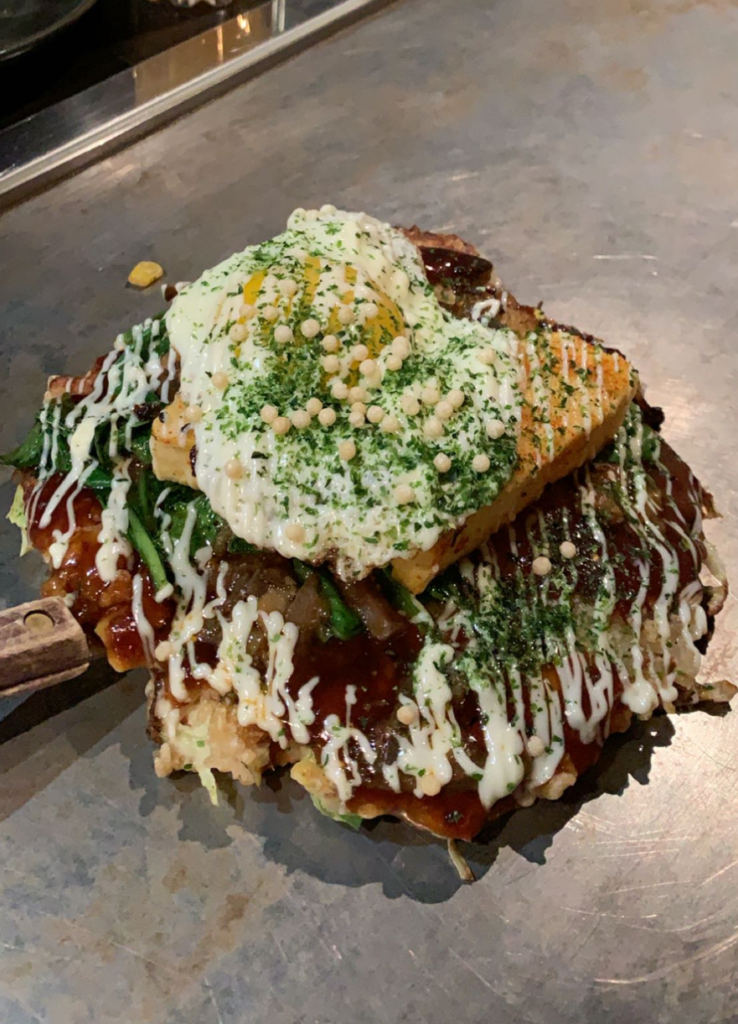
The hostess greets your party immediately upon entering and, afterjust a few seconds, whisks you away to a four-top towards the front of thedining room. Menus, plates, paper napkins, utensils, and water glasses arealready waiting on the table. The electric griddle is on and set to a warming temperature.The water is filled by a busser, and the server presents herself just as yourgroup gets a look at the drink menu, where the cocktails are split into twocategories. The first, “highballs,” combines a base spirit like whisky, gin, orvodka with an accompanying dash of fresh fruit, steeped tea, or an interestingliqueur and plenty of tonic water, ginger beer, or some other non-alcoholicmixer to make it all refreshing and easy to drink. As is the case at manyJapanese restaurants, Gaijin has struck a deal with Suntory to carry some oftheir products (Toki whisky, Haku vodka, Roku gin) and branded barware for usein these highballs. Apart from these six offerings, another category titled“cocktails” contains four further options including plays on a French 75 and anOld Fashioned.
Delving deeper into the beverage list, there are some nineby-the-glass sakes on offer including one in the junmai, two in the junmaiginjo, and one in the junmai daiginjo styles. Glasses are offered in5 oz. “single” pours as well as 10 oz. “shared” servings (at a slightly reducedprice). White, red, and sparkling wines are offered in similar numbers, witharound five by-the-glass options per category and three available only as fullbottles (ranging from $50 – $85 with only a couple options north of $100).There is little here for the wine-lover to get excited about, but Gaijin’soptions cover all the bases respectably, and the sparkling section, inparticular, is certain to please customers with a variety of value options (andonly one bonafide “Champagne” at a list-topping $150). Beers are offered threeon draft—a local “hop-forward” ale, a local “malt-driven” ale, and a crisplager made for Gaijin by Moody Tongue Brewing—and five in bottle, featuringJapanese brands like Sapporo, Hitachino, and Kagua. Iced and hot tea—courtesyof Rare Tea Cellars—and non-alcoholic options like matcha lemonade, cherryblossom soda, Calpico (a milky, uncarbonated soft drink), and Ramune (the soda withthe marble inside) round out the restaurant’s selections.
Your standby has been the “Jin-Ger,” a highball made from gingershochu, ginger liqueur, lemon, and ginger beer. It is refreshing enough butconjures memories of the homemade ginger beer that went into the hand-craftedMoscow mules at your favorite BBQ place in Tokyo. There, the ginger tantalizedyour palate with such a power that you made short work of some three racks ofribs and a half dozen drinks in a quarter of an hour. Here, the “Jin-Ger” isjust alright: one of the best options among a multitude of interesting conceptsthat, nonetheless, fall a bit short in their execution. One drink is a bit tooboozy. The next? Too much syrup. But the cocktails are cheap, they’resmashable, and they do deserve some points for effort. The summerseason—whenever that does come—may see some movement on the beverage list andoffer an opportunity to impress with fresh ideas. For now, you would advisethat guests pick the option that sounds least offensive and allow the cocktailsand other drinks to take a backseat to the food being served.
On that note, Gaijin offers one à lacarte menu from 11 A.M. to 11 P.M. with no specials or other changes throughoutthe day. While this does strike you as a bit static, the dishes have indeedgone through a bit of evolution during the course of your visits. Further, thesimplicity that comes from only having to cook one menu has helped ensure thatthe kitchen remains focused and—more or less—unerring in the time since therestaurant has opened. As you will see, the menu’s structure allows for almostan endless assortment of dishes—offering just the sort of freedom an eclecticchef like Virant can be expected to seize on after all the excitement of thenew opening settles. Virant also deserves some credit for showing off hisingredient sourcing—with River Valley mushrooms, Werp Farms greens, Mighty Vinetomatoes, Slagel Family Farm pork belly, and Publican Quality Meats sausage andbacon all named on the menu. This “who’s who” of Illinois and neighboring stateproducers stands as a testament to both the chef’s quality standards andsupport of local agriculture. Prices do not seem to suffer at all either.Bravo!
To begin, there are “starters” such as kombu-marinated vegetables(celery, green beans, and radish) and crudités served with a shiro-miso dip.While these dishes struck you, at the time, as a bit dainty, you did enjoy aperfectly respectable spicy miso soup and a simple greens salad (dressed withsesame-yuzu vinaigrette) from this section. The starters are rounded out withtwo versions of korokke, a Japanese version of the croquette that seemsheaven-sent for Virant’s concept. Both the “veggie” version (made frommushrooms and rice) and the “beef” (a blend of beef and potato) are combinedwith curry, breaded, deep fried, and served with tomatoes, daikon pickles, andtonkatsu sauce. You tried the beef variant and found the crunchy texturepleasing. The flavor, too, was intensified by the supremely umami sauce.However, you cannot help but find the two croquettes to be a small portion forthe price ($7). Or, perhaps, they just look a little lonely on the plate. Youwould recommend ordering two portions or, as you have more recently done,skipping the “starter” section altogether.
And, mind you, that does not mean skipping appetizers completely, forthe menu’s second section is titled “shared plates.” Does this mean that the“starters” are meant for individuals ordering their own meals at the sametable? Surely, a soup is not easily shared, but is crudité and dip not thedefinition of a “shared plate”? The korokke may be small, you might happily eatboth yourself, but there is clearly some intention that they are shared too.This confusion aside, you would strongly recommend many of the category’sitems, like a dish of deep, dark brown garlic cloves cooked twice and spread ontop of rice crackers. For lovers of garlic, there is no greater pleasure thanthe soft chew and slight caramel notes that come with such extended roasting. Thereis also a preparation of bok choy—steamed and slathered with shoyu,sesame seeds, and fried shallots—that might look like it belongs in the “sides”section but impresses with its contrasting textures. All the aforementionedcrunchy bits work well to liven up the thicker, blander chunks of the cabbage,which, even when cooked well, can otherwise tire one’s palate.
Also to be shared is a dish of beef short ribs—thin, boneless strips afew inches long that are brushed with soy sauce and topped with a handful ofscallions. At $13, the dish barely offers enough beef for two guests to shareas an appetizer, yet the meat is undoubtedly cooked and seasoned well. Thus,these short ribs are somewhat of a failsafe for guests who might be deterred bythe whole “savory pancake” concept and crave something they can truly sinktheir teeth into. Those customers, instead, who are enthusiastic about Gaijin’sokonomiyaki can save their appetite for the beef variant being offered.Rounding out the “shared plates” section are three styles of yakisoba featuringpork belly, octopus, and shrimp respectively. The soba (or, “buckwheat”)noodles are stir-fried with cabbage, scallions, carrots, and the selectedprotein before being lightly dressed in a mystery sauce and topped with sesameseeds. Given how pleasingly chewy Gaijin’s soba noodles are, you feel morecomfortable recommending the yakisoba offerings than the short rib. However,much like the beef, the yakisoba appears in some of the okonomiyaki options,and customers looking to try as many of the restaurant’s signature pancakes aspossible may look to sacrifice such shared plates that rehash the sameingredients. Still, you think an order of the short ribs and an order ofyakisoba would make a nice lunch for anyone who works in the area.
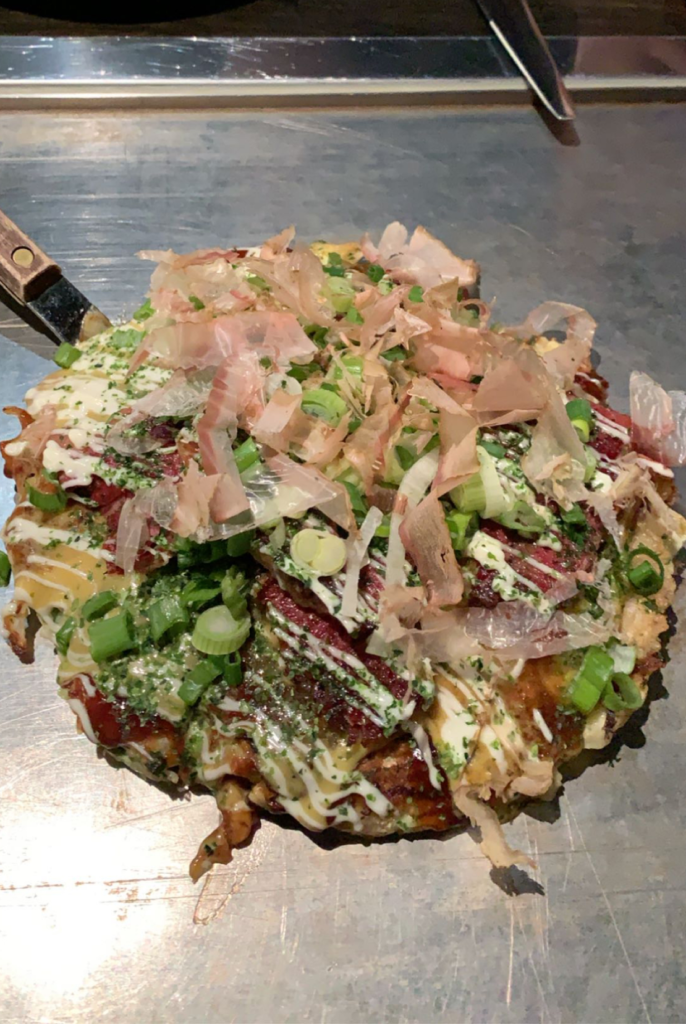
At last, we move onto the main event, Gaijin’s raison d’ être.: theokonomiyaki. Loosely translated into “what you like” (okonomi) “cooked”(yaki), the restaurant’s savory pancakes are divided into three regionalstyles that offer a variety of fillings. First, and most expansive in itsoptions, is the “Osaka-style” pancake where a base of cabbage is combined withother toppings and cooked as one cohesive “batter.” This is contrasted by the“Hiroshima-style,” where yakisoba noodles are installed at the base of thepancake and subsequent ingredients are layered upwards while remaining distinctfrom the batter. Lastly, there is the “negiyaki” pancake made from scallionsrather than cabbage. Each of these styles of pancake are prepared on largegriddles strewn along the kitchen counter and then transported to guests’tables, where they remain on the smaller, inset griddles. Those sitting at thebar or counter are served on small, individual pans. It all works quite well,with the back of house manning its griddles with speed and precision of WaffleHouse’s short-order cooks, and the front of house ferrying pancakes from placeto place… like Waffle House waitresses.
Moving sequentially, the“Osaka-style” okonomiyaki is undoubtedly Gaijin’s standard-bearer, for the incorporationof the ingredients into the batter allows for greater customization andstructural integrity. The shrimp (tempura fried with corn and creole butter),octopus (with hot sauce and honey gastrique), and pork (made from PQM sausageand bacon) pancakes are stand outs and a real testament to the adaptive natureof the okonomiyaki “form.” (Gaijin, of course, refers to a “foreigner” inJapanese, and the restaurant’s name, you think, always implied it will riff ontradition through use of local or broadly American ingredients.) It is hard todo justice to the level of textural complexity at play in these pancakes. Thecrispness of the tempura shrimp, for example, coexists with the pop of cornkernels, the crunch of rice crackers, and the smooth cabbage batter (which,nonetheless, possesses a bit of its own crunch). There’s the creole butter too,perhaps a drizzle of mayonnaise and a dusting of dried seaweed as well. Each ofthe ingredients, depending on the bite one takes, can be distinguished, yetthey undoubtedly combine to create something much greater: a mythical,“perfect” savory bite brimming with sweet, salty, sour, and umami flavors inperfect harmony.
Such is the promise of the savorypancake form, and the “Osaka-style” offerings at Gaijin are made even strongerby the $2 add-ons (egg, bacon, udon, crispy rice, and cheese) available onlywith this style. You would heartily recommend adding either the udon noodles orcrispy rice to any of the pancakes, for the extra layer of texture they bothadd will only work to accentuate the other ingredients in your chosen creation.The egg, bacon, and cheese add-ons will also certainly improve any of the pancakes,but you think the pork, chicken, and beef ones synergize best with the richnessof these flavors and textures. Your ultimate pancake? The pork (sausage andbacon) with egg, udon, and cheese added to it—better known as the breakfastPublican Quality Meats wishes they could serve (just kidding). Closing out thiscategory, you would warn customers against being tempted by the “Osaka-style”flight of three smaller pancakes. While, ostensibly, this option would allowyou to try more flavors, the mini pancakes are a bit too small to properly congealtheir ingredients and, thus, sacrifice the superb textural experience of thefull-size ones.
In contrast with the “Osaka-style”pancakes, those made in the “Hiroshima-style” do away with some of the texturalcomplexity of a fully combined batter in favor of cleaner bites and anincreased focus on several distinct ingredients. Here, the cabbage is layeredon top of the batter and followed by an additional layer of those crispyyakisoba noodles. From that base, the customer can choose one of two styles ofpancake: the “traditional” (bacon, egg, and bonito) or the “vegetarian”(mushroom, egg, tofu skin, and crispy kelp). These additional ingredients arealso added in sequential layers before being topped with a lattice of sauce andserved. There are no add-ons available in this style, (though you have heardtables add bacon onto the vegetarian variant). While, over time, you have cometo exclusively order the “Osaka-style” pancakes, the “Hiroshima-style” iscertainly worth trying at least once. The experience is more akin to eating a donburi,as one may better control the amount of noodle and pancake used to buffer eachbite of the principal ingredients (or simply allow the bottom layer to sop upall the “sauce”). This helps one distinguish and appreciate the pancakes’constituents all the more while, perhaps, inhibiting its ability to be easilyshared. You think the “Hiroshima-style” is best saved for a single diner tomull over while larger parties are better served sharing a wider variety of“Osaka-style” pancakes and make prodigious use of the add-on options.
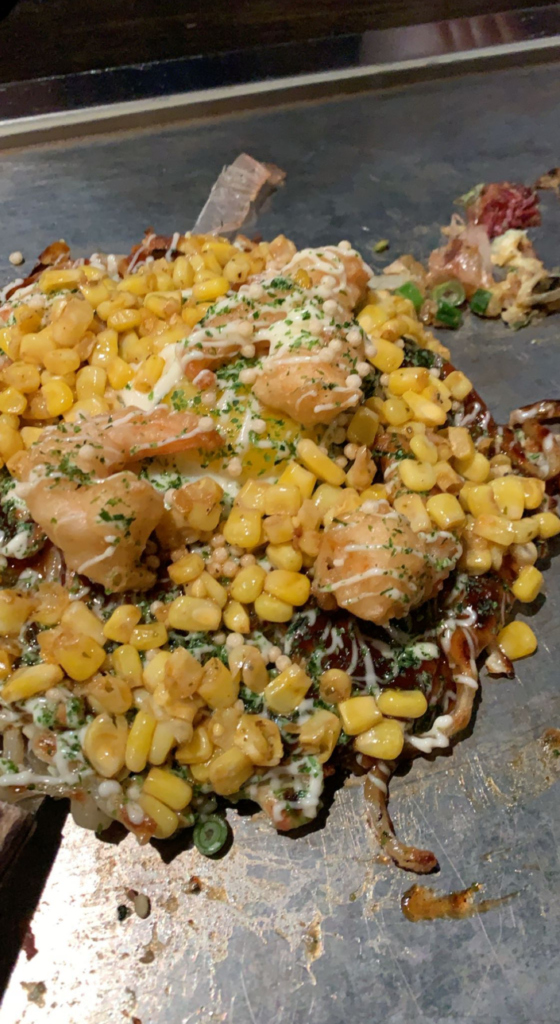
The last of the okonomiyaki options—titled “negiyaki”—comes in oneform: a scallion pancake layered with egg, bacon, ponzu sauce, and topped withbonito flakes. The fragility of the scallion batter means that this pancake isdelivered in a bowl rather than placed on the griddle. Yet, despite missingthis bit of charm, the negiyaki possesses a firmer, more pleasurable crunchthan the cabbage-based varieties. Like the “Hiroshima-style,” it is worthordering at least once but begins to pale in comparison to the “Osaka-style”when one considers variety and customization. It should also be noted thatGaijin also offers three “sides” to accompany customers’ entrées: a trio of tsukemono(Japanese pickles), a housemade kimchi, and a bowl of steamed and seasonedrice. While you find the $3 kimchi to be crunchy, tangy, and—overall—verynicely made, the $5 trio of Japanese pickles leaves something to be desired.The assortment of cucumber, radish, and carrot pieces is not only on thesmaller side, but none of the vegetables taste “pickled” enough to meaningfullycontrast from the other savory fare. Given Virant’s mastery of preservation,you feel that this is a stylistic choice made to showcase the natural flavor ofthe ingredients. Nonetheless, there just isn’t much of that that comes through.No complaints about the rice though.
For dessert, pastry chef Angelyne Canicosa has tried her hand—no, notat sweet pancakes—but at kakigori,a Japanese dessert of shaven ice flavored with syrup and condensed milk. Here,like with the okonomiyaki, Gaijin plays around with both traditional and“westernized” forms. For example, there’s the “ujikintoki,” a classic variantthat combines matcha ice cream, red bean paste, matcha syrup, and mochi. Or,the “sesame yuzu,” which features black sesame ice cream, yuzu syrup,strawberry compote, and a brittle made of honey sesame. The “s’more” (chocolateice cream, graham cracker crunch, toasted marshmallow fluff), “upside-downcake” (buttermilk pineapple sherbet, brown butter crunch, whipped coconut), and“the Gaijin” (cinnamon-gooey buttercake ice cream, caramelized apples, puffedrice brittle) are the more decadent items (being, of course, styled afterAmerican desserts).
By now, you have tried each of the five kakigori and find all of themwanting. Fundamentally, as described on Gaijin’s menu, the shaved ice should be“fluffy and light” so that it “melts instantly to deliver great flavor.” However,you cannot help but find Gaijin’s ice to be much too solid, and the servings ofsyrup and toppings to be much too small to prevent that ice from diluting theflavor of the whole concoction. Even when ordering the sweetest of the optionslike the “smore” or “the Gaijin,” your party found itself excavating the innerlayer of ice cream from its icy tomb and enjoying that, the syrup, and thetoppings separately. Surely, the toasted marshmallow fluff is a nice touch, butit’s gone after just a few bites, leaving one with a mound of brown snow thatonly tastes the slightest bit of chocolate. You might even go so far as to sayyou enjoy the more traditional flavors of matcha and sesame because they tastebetter when diluted in this manner. In sum, there is no doubt that Gaijin’skakigori are well thought out and creative, but there is something at themechanical level (perhaps a lack of specialty ice shaving equipment) thatprevents them from really working. Thankfully, each of the housemade ice creamsare available individually, along with several flavors of crispy-then-chewyglazed mochi donuts made with rice flour. These donuts are excellent andsomething that Canicosa should be very proud of.
While not each and every dish on Gaijin’s menu is a smash hit, youhave little doubt that most customers will leave the restaurant feelingpleased. Pleased and impressed, for Virant does convince diners that theokonomiyaki form is more than a novelty. It’s not being appropriated either, asthe chef knows both how to show reverence towards tradition while harnessingthe spirit of that tradition to find new frontiers for the savory pancake form.The inroads Virant has made over a long career championing local produce alsoreally pay off, as the success of Gaijin’s dishes hinges only on a small numberof ingredients that must be procured and prepared at their very best. That isnot to say that certain items—like the Japanese pickles and shaved icedesserts—and some portion sizes couldn’t do with a little tweaking. Nonetheless,in the time since its opening, the restaurant’s menu has already expanded andrefined its offerings. So long as Virant and his team stay motivated—and, witha prime spot in a growing neighborhood, why wouldn’t they—both the okonomiyakiand kakigori offer almost endless room for new renditions.
In the final analysis, Gaijin represents fast casual dining at itsbest. It offers Chicagoans a novel food, prepared quickly, thoroughlycustomizable, easily eaten alone (or shared), along with a dizzying array ofsmall plates that draw on some of the same ingredients to cover all the basesand provide extra value. The drinks are pleasing (just don’t look for muchdepth), and the dessert is likely to impress (the kakigori still lookscaptivating even if the dish is technically flawed). Service, when all is saidand done, hums along without the slightest problem. You’re not sure there ismuch of an opportunity for the front of house staff at Gaijin to connect deeplywith customers, yet they do seem natural, gracious, and geared towardsanswering the many questions that are part and parcel of serving the city a newcreation.
The careful hand with which Paul Virant has crafted his “restaurant empire” (of which, maybe with Gaijin’s opening, the term can now be said to apply) has paid off well. Gaijin operates with all the self-confidence and restraint of an experienced chef at the helm. The restaurant succeeds in introducing a far-flung delicacy—celebrating the savory pancake in its traditional, regional forms while, simultaneously, transforming it by way of local ingredients and Virant’s personal style. Only one question remains: is okonomiyaki a try-before-you-die novelty, or will Gaijin earn a lasting place among Chicago’s comfort food classics? Only one man, Virant, can answer such a question. But, judging by the creativity already on display, Gaijin only promises to get better.


